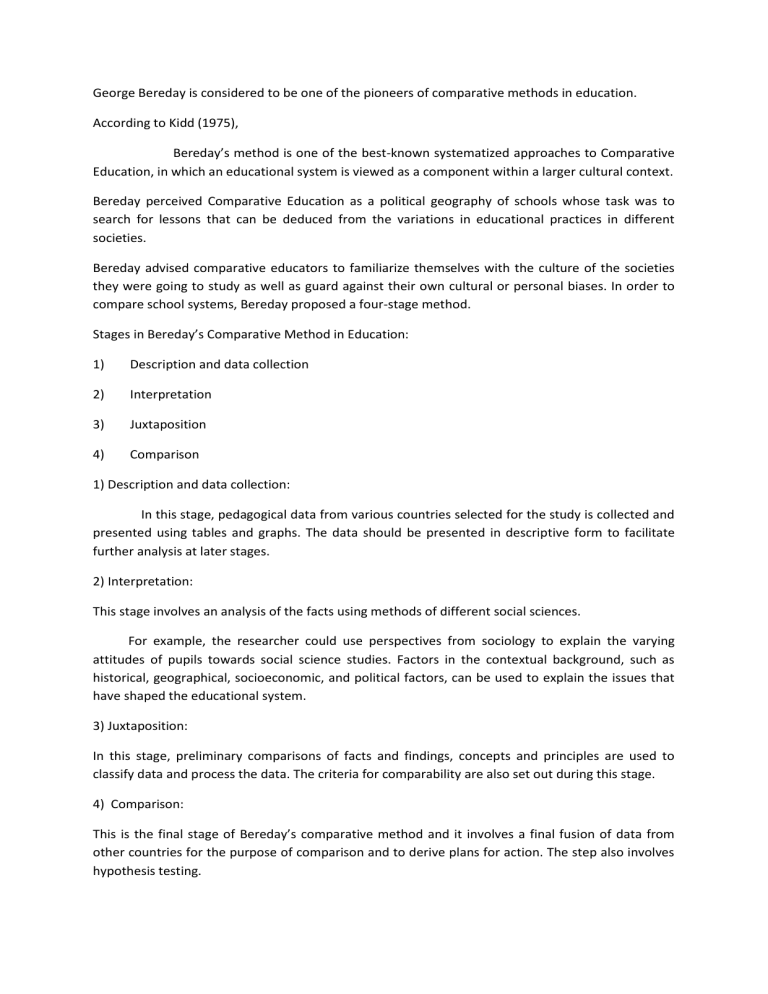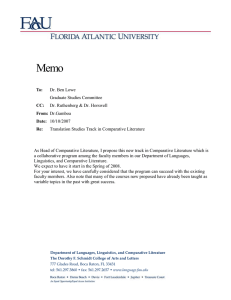
George Bereday is considered to be one of the pioneers of comparative methods in education. According to Kidd (1975), Bereday’s method is one of the best-known systematized approaches to Comparative Education, in which an educational system is viewed as a component within a larger cultural context. Bereday perceived Comparative Education as a political geography of schools whose task was to search for lessons that can be deduced from the variations in educational practices in different societies. Bereday advised comparative educators to familiarize themselves with the culture of the societies they were going to study as well as guard against their own cultural or personal biases. In order to compare school systems, Bereday proposed a four-stage method. Stages in Bereday’s Comparative Method in Education: 1) Description and data collection 2) Interpretation 3) Juxtaposition 4) Comparison 1) Description and data collection: In this stage, pedagogical data from various countries selected for the study is collected and presented using tables and graphs. The data should be presented in descriptive form to facilitate further analysis at later stages. 2) Interpretation: This stage involves an analysis of the facts using methods of different social sciences. For example, the researcher could use perspectives from sociology to explain the varying attitudes of pupils towards social science studies. Factors in the contextual background, such as historical, geographical, socioeconomic, and political factors, can be used to explain the issues that have shaped the educational system. 3) Juxtaposition: In this stage, preliminary comparisons of facts and findings, concepts and principles are used to classify data and process the data. The criteria for comparability are also set out during this stage. 4) Comparison: This is the final stage of Bereday’s comparative method and it involves a final fusion of data from other countries for the purpose of comparison and to derive plans for action. The step also involves hypothesis testing.


